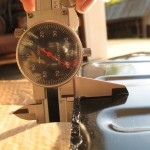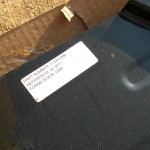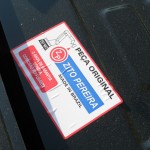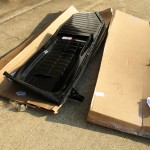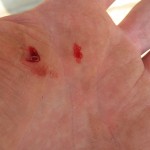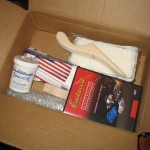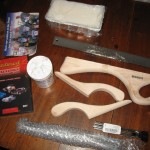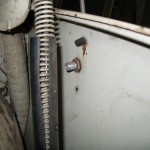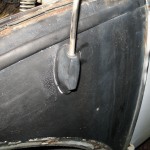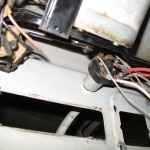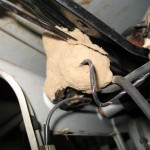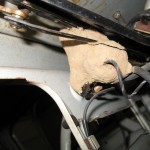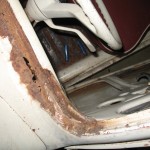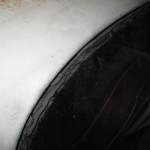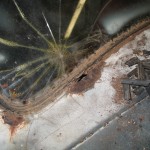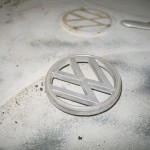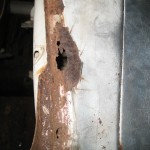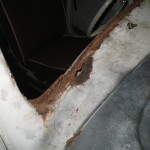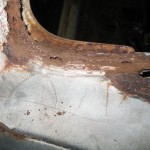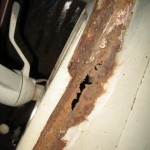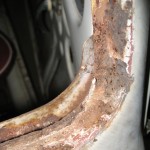Received new floor pans today. I ordered these from a supplier on eBay (eBay ID: CarParts) for $62.55 each, shipping included. Jack points and cross braces are included, and are welded-on. Seat brackets are also included.
The price was quite low, so my expectations were, too. Shortly after paying for them, I noticed that eBay had marked their userID as “No longer a registered user”. CarParts had a feedback rating of about 37000, so they were selling a lot of stuff. Perhaps they had some billing issues? Not sure. I was a little worried, and sent some messages to the website (carparts.com) and found out the pans had already shipped. That was a relief. Pans showed up a day or two later.
Pans are made in Brazil. They look OK. I’ve never installed floor pans before, so I have no idea how they should look/feel. Will know more when I put them in. Everyone talks about the thickness of the metal, so I put the caliper on it — .061 or thereabouts. According to this UNC web page that works out to 16 gauge metal. Other sites, users, and suppliers refer to 18 gauge metal for floor pans, so maybe that’s what these are. I’m not sure how much thickness is added by the paint, and how that affects the gauge.
I cut my hand pulling the pan out of the box — the sheet metal is sharp. I hope that’s not one of those lessons that take a lot of ‘experience’ to learn.
The company still has them on the website (here’s the passenger side: Floor Pan, P/N:113-701 060), albeit at a little higher price ($104.99).
